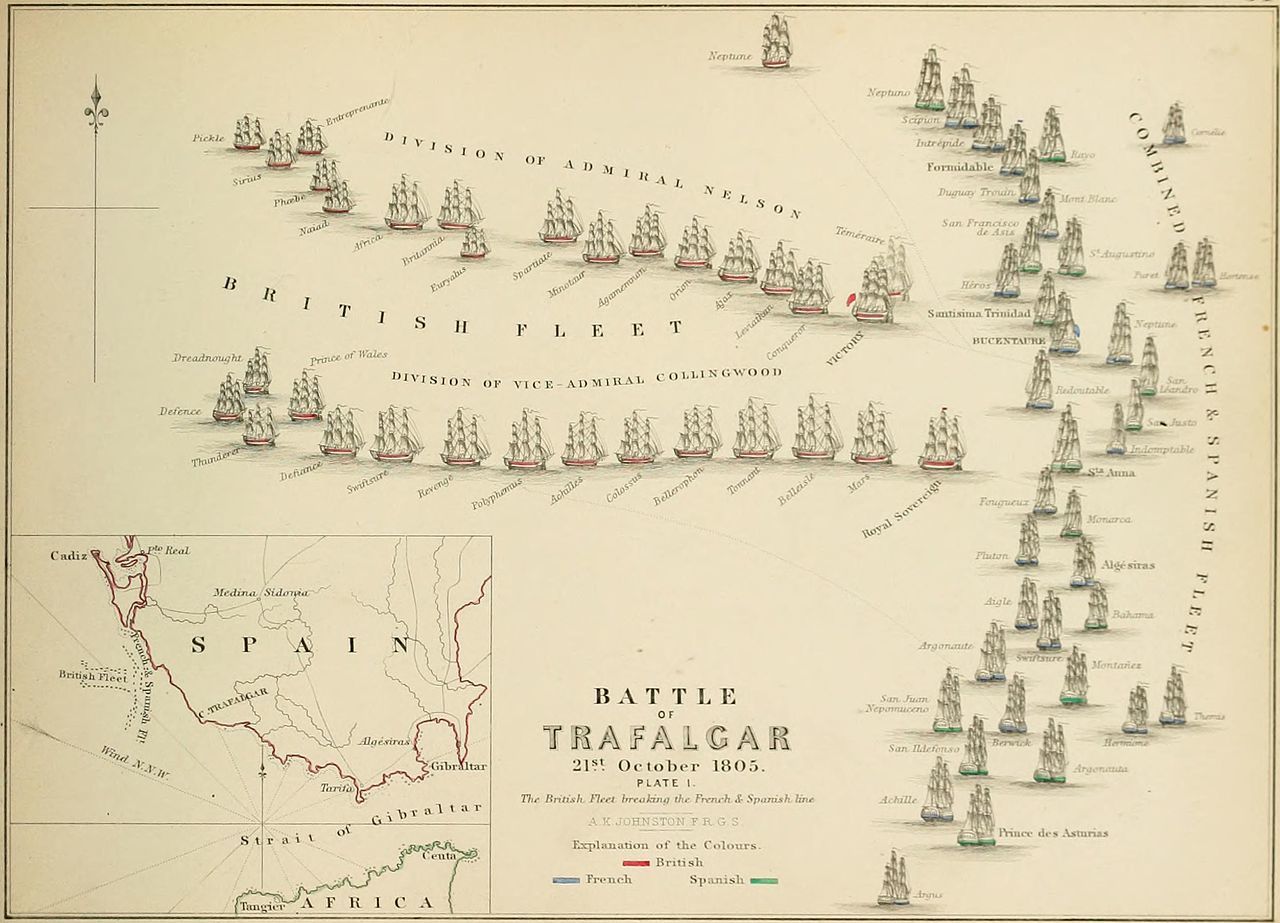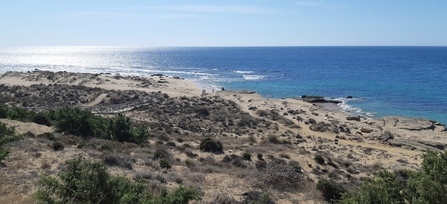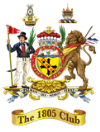The Battle of Trafalgar is one of the most well-known naval battles in history, but where is Trafalgar, and why did the battle take place there?
Cape Trafalgar is a headland in the south-west of Spain, in the province of Cadiz. The battle itself took place to the west of Cape Trafalgar, in the famous Atlantic swell!
The Bay of Cadiz was a relatively sensible choice for a battle. Not least because were the Spanish to try and leave Cadiz they would be easily spotted, but also because Cape St Vincent, to the North, provided relative shelter to those in the Bay from north easterly winds.
Ships of the Combined French and Spanish fleet were moored in Cadiz, in preparation for Napoleon’s then abandoned invasion of Britain, with the British fleet less than 50nm away. By being further out to sea, Nelson know that his fleet would be far less likely to be spotted by enemy scouts or outposts. Napoleon had given the orders for Villeneuve to sail to the Mediterranean, taking troops to Naples to support the struggling French army. Villeneuve was more than aware of Nelson’s impending presence.

The sailing of the Franco-Spanish fleet from Cadiz at that time was postponed, partly because Napoleon was losing faith in Villeneuve, and looking to replace him, and partly due to weather. They hoped that predicted storms would break up and drive away the British fleet, giving them fair winds to leave Cadiz and create space. Regardless of the weather, Villeneuve knew he had been dealt a poor hand. He could not leave, whilst British reinforcements were joining the fleet daily.
Around the 10th of October, Nelson received word that the enemy were due to depart Cadiz that evening, the fleet was gathering close to the mouth of the harbour and showed signs of preparing to make way. Nelson made plans for a morning battle, to ensure that they would have the best light of the day.
However, once more the weather caused problems, the enemy fleet could not leave Cadiz. Nelson did however use this plan as a template for Trafalgar, allocating ships to each column and giving them a position in the line. This changed a number of times prior and during the Battle of Trafalgar but much remained the same. He wanted to sail at full speed, with his fleet in two lines. One commanded by himself, and one by his second-in-command, Vice Admiral Cuthbert Collingwood, with a small reserve group if required. His intention? To break through the combined fleet, and isolate the ships at the rear, defeating them before those at the front were able to turn and come to their aid.
The Combined Fleet managed to depart Cadiz on the morning of 19th October. Villeneuve had received word of British ships in Gibraltar and took this as a sign that Nelson’s fleet would be weakened (little did he know). On the evening of the 20th October 1805, the two fleets were moving towards each other cautiously and a battle was inevitable…







